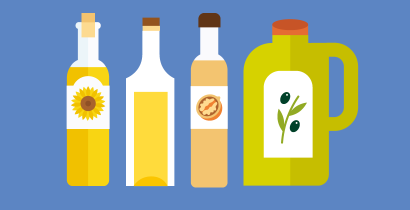What are saturated fats and are they bad for our heart?
Last Updated : 16 August 2021Saturated fat is one of the most debated areas in nutrition. This article explains what the latest evidence says and provides tips for improving heart health.
Saturated fat is one of the most hotly debated areas in nutrition. This debate has led to contradictory media headlines about how they affect our health, harming the trust in public health messages aimed at reducing our intake. This article will explain what saturated fats are and in which foods they are found, what the evidence says about reducing our intake and provides lifestyle tips for improving heart health.
What are saturated fats?
Fats are made up of two kinds of smaller molecules: glycerol and fatty acids. Fatty acids are made up of chains of carbon and hydrogen atoms. These chains vary in both the number of carbons they contain and the number of double bonds between each carbon (figure 1).
Although fats are often described as a single entity, there are different types of fats and each of these can have a different effect on our health.
Fats with one or more double bonds are called unsaturated fats. These can be:
- monounsaturated fats (MUFA, containing one double bond),
- polyunsaturated fats (PUFA, containing more than one double bond),
- or trans fats, with at least one double bond in a specific orientation known as a ‘trans’ configuration.
The term ‘saturated’ fat refers to a fat (or fatty acid) with no double bonds along its carbon chain.
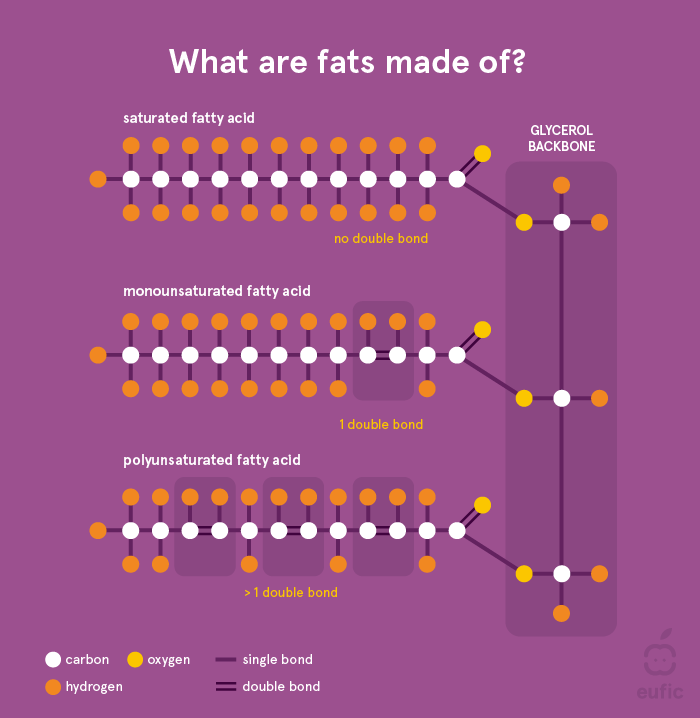
Figure 1. Structure of a saturated, monounsaturated (MUFA) and polyunsaturated (PUFA) fatty acid.
What foods are high in saturated fat?
The fats we find in foods are made up of mixtures of both saturated and unsaturated fats. In general, saturated fats are major components of fats that are solid at room temperature, whereas, unsaturated fats are found in fats or oils that are liquid at room temperature. While there are no foods that contain only saturated or unsaturated fat, some foods, such as fatty meats, butter and coconut oil contain high amounts of saturated fats. Therefore, when we talk about reducing saturated fat, we really mean eating fewer of these kinds of foods (figure 2) and replacing them with foods that contain more unsaturated fats, such as many types of vegetable oils, fish and nuts.
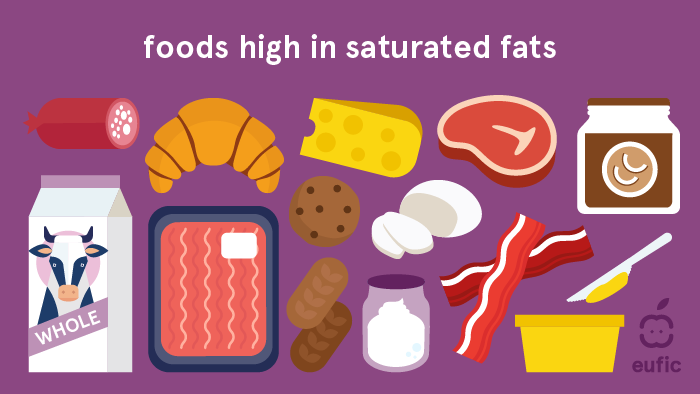
Figure 2. Foods high in saturated fats1.
Why is too much saturated fat bad for our heart?
Our blood contains a wax-like substance called cholesterol. There are two main types of cholesterol: low density lipoprotein (LDL) cholesterol and high density lipoprotein (HDL) cholesterol. High levels of LDL cholesterol, often referred to as ‘bad’ cholesterol, in the blood can increase our risk of heart disease.2 Similarly, it is also known that high intakes of saturated fat can increase LDL cholesterol levels.3
The relationship between saturated fat in our diets and heart health is complex. This complexity and the resulting debate is because most of the evidence supporting a benefit for reducing the amount of saturated fat we eat is based on whether this in turn reduces the levels of LDL cholesterol. This is complicated by the fact that if we reduce the intake of certain foods in our diet – such as foods high in saturated fat – we generally replace them with something else. It turns out, what we replace saturated fat with is important to studying its effect on our heart disease risk.
To date, the evidence suggests that replacing saturated fat with unsaturated fats, particularly, polyunsaturated fats, can help maintain normal LDL-cholesterol levels and more importantly can lead to a small reduction in heart disease risk.3,4 However, replacing saturated fats in the diet with carbohydrates has not been found to benefit our heart disease risk and in the case of sugars, may even increase our risk.3,4 In the case of protein, there is not enough evidence to draw a conclusion.
In summary
The effect of reducing saturated fat on both LDL-cholesterol levels and our risk of heart disease depends on what it is replaced with. Current evidence suggests replacing saturated fats with unsaturated fats, particularly polyunsaturated fats, can help to reduce both LDL-cholesterol and heart disease risk.
Are all foods high in saturated fat bad for our heart?
Although we have talked primarily about saturated fat, it is important not too lose sight of the fact that we eat foods and not nutrients. Foods are made up of complex combinations of nutrients which can influence how we metabolise them. When considering the effects of saturated fat on our health it is also important to look at which foods we get them from. So, do all foods high in saturated fat have the same effect on our cardiovascular health?
Again, its complicated. One example is full fat dairy products such as full fat milk, yoghurt and cheese. Despite containing high levels of saturated fats, some studies suggest that they do not appear to increase our heart disease risk as much as might be expected, particularly when compared to other saturated fat sources like beef and lamb.5,6 The exact reason for this is not fully understood, but it may be due to the complex food matrix of dairy products which may influence the absorption of saturated fats thereby reducing their effects on LDL cholesterol.7
How much saturated fat should we eat?
Currently, almost all dietary guidelines and international and European health bodies including the World Health Organisation and the European Society of Cardiology recommend we aim to get less than 10% of our total daily energy from saturated fats and reductions should be achieved by replacing them with unsaturated fats, particularly polyunsaturated fats.8,9
Across most European countries, intakes of saturated fat remain well above this 10% threshold (figure 3).10
Again, it is important to remember that we eat foods, and not single nutrients. Healthy eating is about balance and in order to meet the recommendations of dietary guidelines, we should aim to eat a diet based on a variety of healthy foods, rich in fruits and vegetables, and low in saturated fat, sugars and salt.
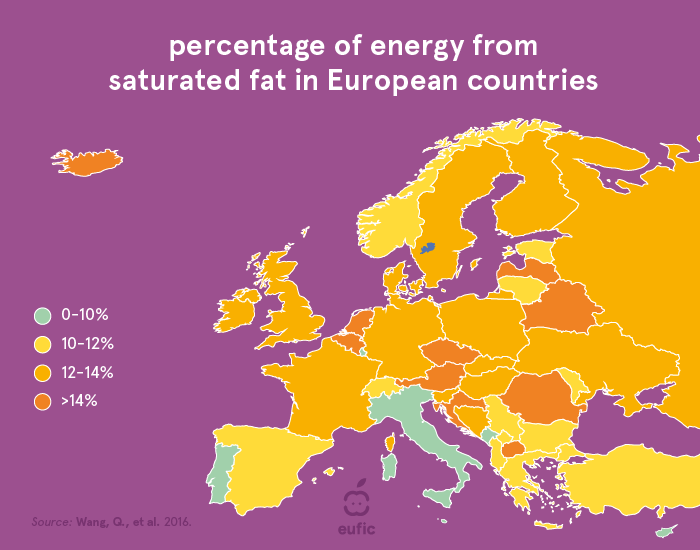
Figure 3. Estimated percentage of energy from saturated fat across European countries.10
Tips to reduce saturated fat intake
Saturated fats are mainly found in fatty cuts of meat, butter, lard, and convenience foods such as cakes, pies, pizzas and puddings. Therefore, special care should be taken when choosing these foods. Here are some helpful tips to help you reduce your saturated fat intake:
- Choose lean cuts of meat and trim off visible fat; remove the skin from poultry meat.
- Boil, bake or grill meats rather than fry.
- Limit the consumption of high-fat foods such as cakes, pies, ice- cream.
- Choose vegetable oils and spreads rich in unsaturated fat, such as sunflower, rapeseed and olive oil rather than those high in saturated fat such as butter, lard and coconut oil.
- Replace meats high in saturated fat (in particular from ruminanat animals such as beef and lamb) with foods that contain more unsaturated fats, such as fish, nuts and seeds.
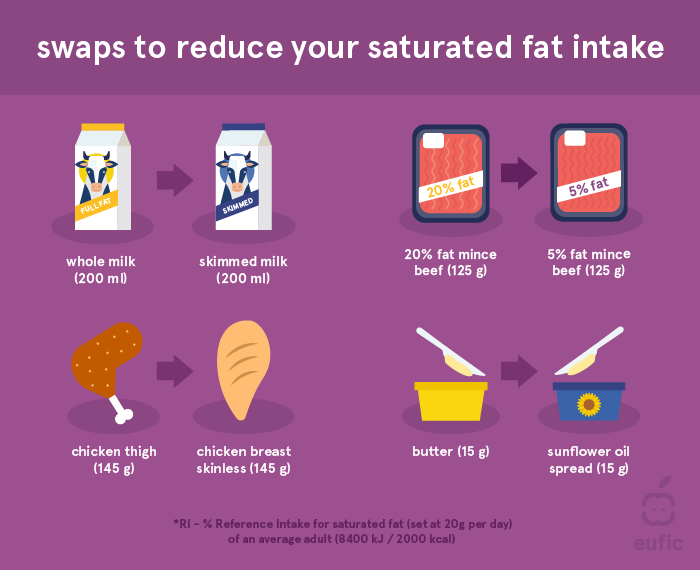
Figure 4. Simple food swaps to help reduce your saturated fat intake.
What other lifestyle factors are important for heart health?
When it comes to heart health, saturated fat is just one small piece of the puzzle. On its own, reducing saturated fat may only bring a small benefit. When it comes to keeping our heart healthy, there are many other lifestyle factors to keep in mind. These include eating a balanced diet, being physically active, not smoking, limiting alcohol intake and keeping our blood pressure in a healthy range.
For the prevention of heart disease, the European Society of Cardiology recommends that we:9
- Eat a healthy balanced diet, which they define as a diet with:
- Less than 10% of total energy intake from saturated fat, achieved through replacement by polyunsaturated fat
- As little trans fat as possible, preferably no intake from processed foods that contain them (e.g. bakery products like cakes, cookies and biscuits, microwave popcorn, frozen pizza, refrigerated dough, such as biscuits and rolls, fried foods, including french fries, doughnuts and fried chicken), and less than 1% of total energy intake from natural origin
- Less than 5 g of salt per day
- 30–45 g of fibre per day, preferably from whole grain products
- At least 200 g of fruit per day (2–3 servings)
- At least 200 g of vegetables per day (2–3 servings)
- Fish 1–2 times per week, one of which to be oily fish
- 30 g of unsalted nuts per day
- Limited intake of sugar-sweetened drinks
- Be physically active: At least 150 minutes a week of moderate aerobic activity (30 minutes for 5 days/week) or 75 minutes a week of vigorous aerobic activity (15 minutes for 5 days/week) or a combination of the two.
- Limit alcohol consumption to a maximum of:
- For men: up to 20 g/day (2 units, e.g. 200 ml of 12.5% vol wine; 500 ml of 5% vol beer)
- For women: 10 g/day (1 unit, e.g. 100 ml of 12.5% vol wine; 250 ml of 5% vol beer).
- Don’t smoke.
In summary
Heart disease is the leading cause of death in Europe and around the globe. For the prevention of heart disease we should aim to eating a balance diet rich in fruits and vegetables and low in saturated fat, salt and sugar, keep physically active and don’t smoke.
Further reading
- Functions, classification and characteristics of fats
- The functions of fats in the body
- Facts about fats
References
- UK Food Composition database.
- Borén, J. et al., 2020. Low-density lipoproteins cause atherosclerotic cardiovascular disease: pathophysiological, genetic, and therapeutic insights: a consensus statement from the European Atherosclerosis Society Consensus Panel. European Heart Journal
- Mensink, R.P. and World Health Organization, 2016. Effects of saturated fatty acids on serum lipids and lipoproteins: a systematic review and regression analysis.
- Hooper, L. et al., 2020. Reduction in saturated fat intake for cardiovascular disease. Cochrane database of systematic reviews, (5).
- Fontecha, J., et al. 2019. Milk and dairy product consumption and cardiovascular diseases: an overview of systematic reviews and meta-analyses. Advances in Nutrition, 10 (suppl_2), pp.S164-S189.
- O’Sullivan, T.A., Hafekost, K., Mitrou, F. and Lawrence, D., 2013. Food sources of saturated fat and the association with mortality: a meta-analysis. American Journal of Public Health, 103(9), pp.e31-e42.
- Thorning, T.K., et al., 2017. Whole dairy matrix or single nutrients in assessment of health effects: current evidence and knowledge gaps. The American journal of clinical nutrition, 105(5), pp.1033-1045.
- World Health Organisation (WHO)., 2018. Draft Guidelines: Saturated fatty acid and trans-fatty acid intake for adults and children.
- Piepoli, Massimo F., et al. "2016 European Guidelines on cardiovascular disease prevention in clinical practice: The Sixth Joint Task Force of the European Society of Cardiology and Other Societies on Cardiovascular Disease Prevention in Clinical Practi
- Wang. Q., et al, 2016. Impact of Nonoptimal Intakes of Saturated, Polyunsaturated, and Trans Fat on Global Burdens of Coronary Heart Disease. J Am Heart Assoc. 2016;5.


